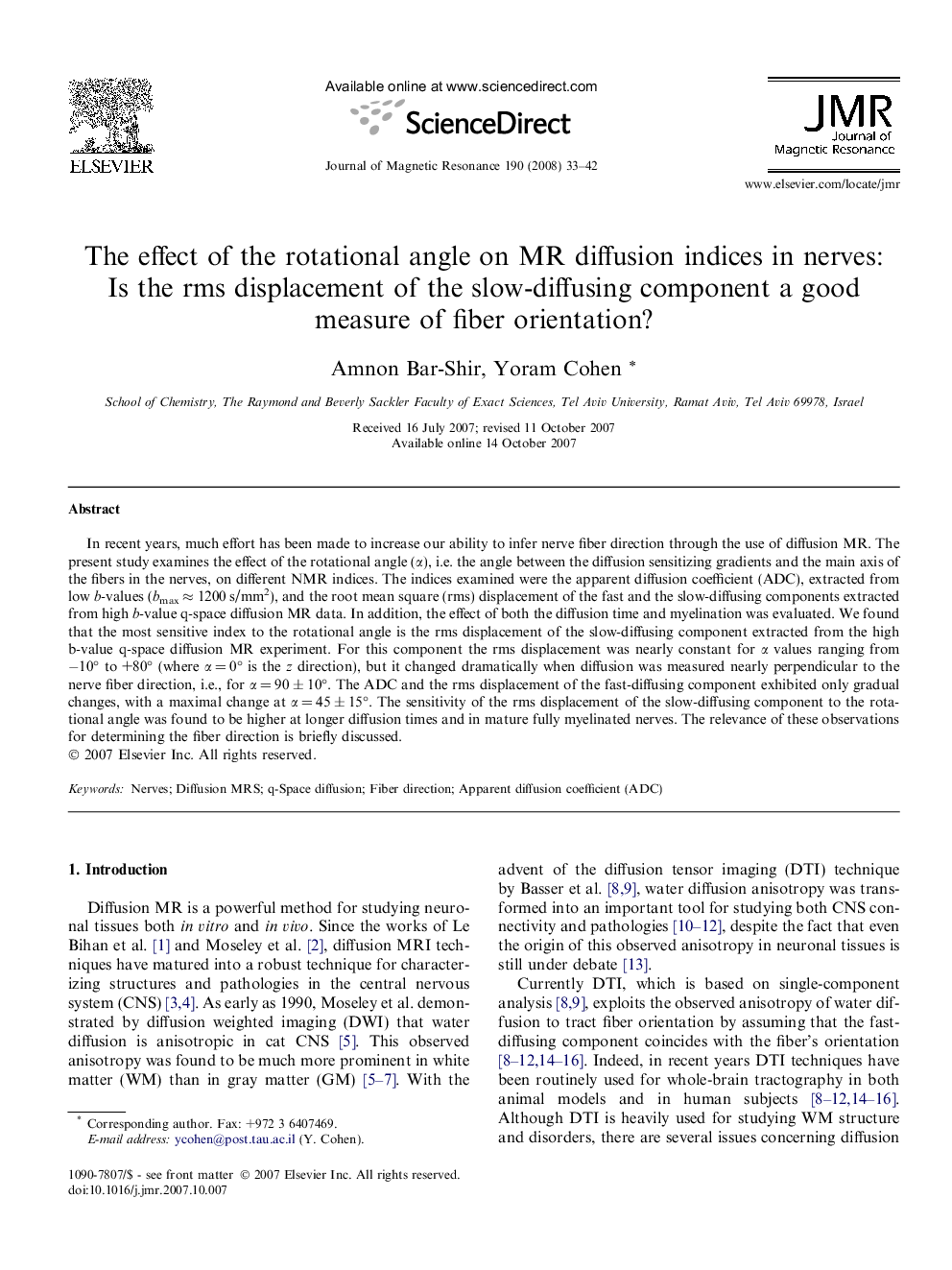| Article ID | Journal | Published Year | Pages | File Type |
|---|---|---|---|---|
| 5407397 | Journal of Magnetic Resonance | 2008 | 10 Pages |
Abstract
In recent years, much effort has been made to increase our ability to infer nerve fiber direction through the use of diffusion MR. The present study examines the effect of the rotational angle (α), i.e. the angle between the diffusion sensitizing gradients and the main axis of the fibers in the nerves, on different NMR indices. The indices examined were the apparent diffusion coefficient (ADC), extracted from low b-values (bmax â 1200 s/mm2), and the root mean square (rms) displacement of the fast and the slow-diffusing components extracted from high b-value q-space diffusion MR data. In addition, the effect of both the diffusion time and myelination was evaluated. We found that the most sensitive index to the rotational angle is the rms displacement of the slow-diffusing component extracted from the high b-value q-space diffusion MR experiment. For this component the rms displacement was nearly constant for α values ranging from â10° to +80° (where α = 0° is the z direction), but it changed dramatically when diffusion was measured nearly perpendicular to the nerve fiber direction, i.e., for α = 90 ± 10°. The ADC and the rms displacement of the fast-diffusing component exhibited only gradual changes, with a maximal change at α = 45 ± 15°. The sensitivity of the rms displacement of the slow-diffusing component to the rotational angle was found to be higher at longer diffusion times and in mature fully myelinated nerves. The relevance of these observations for determining the fiber direction is briefly discussed.
Related Topics
Physical Sciences and Engineering
Chemistry
Physical and Theoretical Chemistry
Authors
Amnon Bar-Shir, Yoram Cohen,
